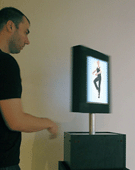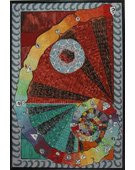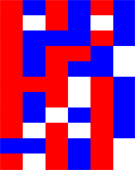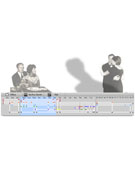“Cross-being: Dancer” is an interactive audio and video installation based on the spinning screen idea. Inspired by a ballerina music box, a virtual dancer on-screen spins along with the physical screen as the user spins it. “Cross-being: Dancer” aims to explore the “doubling effect” of visual illusion that takes place in between the physical and virtual worlds and between visibility and invisibility. Examining a human being's perceptive consciousness, the philosopher Merleau-Ponty says that the relationship between the visible and the invisible is not opposite. Rather, it is more the interrelationship between the "boundaries" of the inner and outer that shapes the indeterminate senses of touching and being touched, of seeing and being seen. This effect of visibility and invisibility has long been used to create optical illusions, e.g. in the devices invented for moving images in the 17-18th centuries such as zoetropes, thaumatropes, and phenakistiscopes. Each device explored the limitations ...
Full Description
“Cross-being: Dancer” is an interactive audio and video installation based on the spinning screen idea. Inspired by a ballerina music box, a virtual dancer on-screen spins along with the physical screen as the user spins it. “Cross-being: Dancer” aims to explore the “doubling effect” of visual illusion that takes place in between the physical and virtual worlds and between visibility and invisibility. Examining a human being's perceptive consciousness, the philosopher Merleau-Ponty says that the relationship between the visible and the invisible is not opposite. Rather, it is more the interrelationship between the "boundaries" of the inner and outer that shapes the indeterminate senses of touching and being touched, of seeing and being seen. This effect of visibility and invisibility has long been used to create optical illusions, e.g. in the devices invented for moving images in the 17-18th centuries such as zoetropes, thaumatropes, and phenakistiscopes. Each device explored the limitations of static image representation, providing a unique physical interface structure and manual mechanical operation to create the illusion of moving imagery. In “Cross-being: Dancer,” this "doubling effect" is now newly explored through two separate but corresponding layers between the physical and virtual worlds using a tangible screen interface with the real-time digital video processing technology. In contrast to two dimensional fixed static view screens, the spinning screen enhances the user's ability to engage with spatial aspects of the visible and also the temporal. The temporal invisibility is controlled through the representation of the slow motion dancer, and spatial invisibility is subdued by the screen's spinning. As the viewer spins the screen, the back-to-back set of images affords possibilities to represent the front-side of the dancer on one side, and the backside of the dancer on the other-in order to realize this, the dancer's spinning performance was captured from two opposite directions. Thus, depending on where they stand, viewers can have multiple perspectives on the same event, which retains a greater part of the original spatial context of the event. In this way, the spinning screen enables people to grasp aesthetic and philosophical interpretation between the gap of visibility and invisibility and physical and virtual. Since this doubling effect is highly based on perceptual experience, it is best achieved through actual observation of the experience.
Work metadata
- Year Created: 2008
- Submitted to ArtBase: Sunday Mar 30th, 2008
- Original Url: http://www.hyunjeanlee.com
- Permalink: http://www.hyunjeanlee.com
-
Work Credits:
- Hyun Jean Lee, creator
Take full advantage of the ArtBase by Becoming a Member





